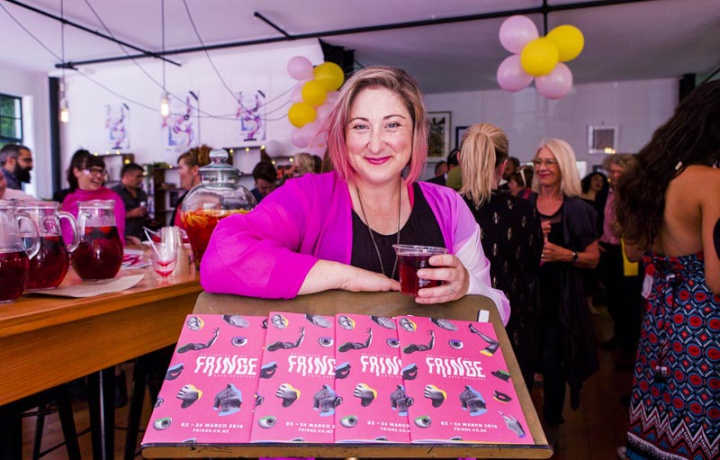Increased access at NZ Fringe 2018
Increased access at NZ Fringe 2018

“There are no barriers to what
performers present at the Fringe and so there should be no
barriers to who can be part of it,” says Hannah Clarke,
Director of the NZ Fringe Festival on in Wellington from 2
to 24 March. The festival is New Zealand’s largest fringe
festival and this year features more than 1100 artists in
700 different shows and events staged all around the
city.
Accessibility is a key topic in the discussions that Hannah and her team have had with artists in the lead-up to the annual three-week event.
“Artists are always open to talking about access,” Hannah says. “If we can seed ideas and possibilities with artists, then accessibility becomes part of the language of art.”
Kakano (seed) funding is available to New Zealand artists for the development of new work, thanks to Creative New Zealand. Hannah says that “considering accessibility in the early stages of a project will result in a more authentic product”.
As a result of these discussions, Knead Theatre identified that its work Scribble could suit Deaf audience members as it is a very physical piece with little spoken content. It’s described in the programme as “a tale of scribbling and tapping away on the last page ... ”
Scribble runs from 15 to 17 March at the Potocki Paterson Art Gallery in Dixon St.
Ensuring access and inclusion for perfomers is also important, Hannah says. In Big J Stylez, solo performer Jacob Dombroski highlights the struggle and bullying he has faced for being different. Jacob, who was born with Down syndrome, shares his story through music, dance and theatre.
Big J Stylez and six other Fringe shows will be performed in the new hearing-looped theatre at Te Auaha campus in Dixon St. https://www.teauaha.com/
The NZ Fringe team has worked with sponsor NV Interactive to develop its website, where accessible shows can be quickly identified. Wheelchair accessibility for each theatre is listed in the programme and online. https://fringe.co.nz/programme/venues-accessibility
Hannah says that further changes will come in 2019. “We still have a really long way to go, but every step we take is a step closer to accessibility.”
Along with the physical accessibility of their venues, artists are encouraged to consider ways they can include people with access needs. For example:
• touch tours of the set before performances can help people who are blind or have low vision
• relaxed performances remove the pressure for audience members to be still and quiet throughout the show
• New Zealand Sign Language interpreted shows provide access to the narrative for Deaf people.
“The arts are about progress, change and ideas, and we can be leaders in providing access,” Hannah says.
In addition to the accessibility information available on the Fringe website, people with access needs can contact the organisers or visit a Fringe Box Office to discuss what shows will work for them.
ends


 Tertiary Education Union: UCOL Cuts Will Cause Lasting Damage
Tertiary Education Union: UCOL Cuts Will Cause Lasting Damage National Library Of New Zealand: Kate De Goldi Named Te Awhi Rito Reading Ambassador For Aotearoa
National Library Of New Zealand: Kate De Goldi Named Te Awhi Rito Reading Ambassador For Aotearoa Hikoi for Health: Healthcare Crisis Drives Cross-Country Protest | Hīkoi For Health Set To Begin
Hikoi for Health: Healthcare Crisis Drives Cross-Country Protest | Hīkoi For Health Set To Begin University of Auckland: New Zealand Professor's Paper Is One Of Century's Most-Cited
University of Auckland: New Zealand Professor's Paper Is One Of Century's Most-Cited Taite Music Prize: The 2025 Taite Music Prize Winner Is MOKOTRON - WAEREA
Taite Music Prize: The 2025 Taite Music Prize Winner Is MOKOTRON - WAEREA Health Committee: Have Your Say On The Medicines Amendment Bill
Health Committee: Have Your Say On The Medicines Amendment Bill